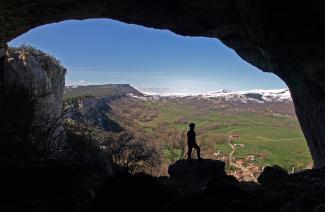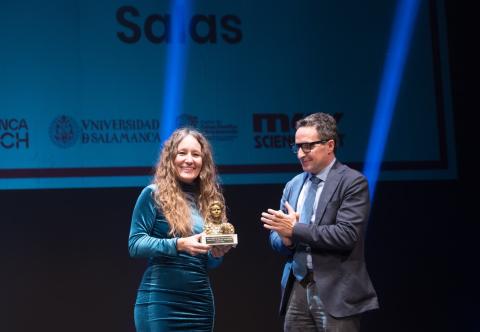This is a Middle Paleolithic site in Ojo Guareña where abundant bone remains with cut marks and Mousterian industry have been found, which makes it the third known Neanderthal cave in this karstic complex north of Burgos
Ana Isabel Ortega Martínez, an archaeologist collaborating at the Centro Nacional de Investigación sobre la Evolución Humana (CENIEH), is codirector of the new excavation campaign at Kaite Cave, a site in Ojo Guareña (Merindad de Sotoscueva), where abundant faunal remains with cut marks and Mousterian industry have been found, making it the third known Neanderthal cave in this karstic complex north of Burgos.
At this site, whose other codirector is the archaeologist Marco Vidal Cordasco of the Universidad de Cantabria, 155 pieces of lithic industry have been recovered, mostly of flint (racloirs, denticulate tools, cores, flakes and minor knapping remains), as well as 263 bone remains and 10 dental pieces from cervids, ovicaprids, equids and bovids, with cut marks. The assemblage of materials suggests that the activities at Kaite included knapping, quartering and butchery of bones, as well as the consumption of meat.
Two bones with cut marks were used to obtain radiometric dates. One of them shows a chronology of about 43,000 years, while the second has been dated to about 45,000 years old. The two dates show us this is a Middle Paleolithic site, matching the estimates made from analysis of the lithic industry and fauna.
The tools and ages speak of a Mousterian industry, typical of the Neanderthals, making Kaite Cave the third cavity in Ojo Guareña with evidence of this species, after the Prado Vargas and Palomera caves.
This project is financed by the Ayuntamiento de la Merindad de Sotoscueva and the Diputación Provincial de Burgos, with additional funds from Vidal Cordasco's research project “Effects of the erosion of biodiversity on the role of humans in food chains during the Pleistocene-Holocene transition in the north of Iberia.”







